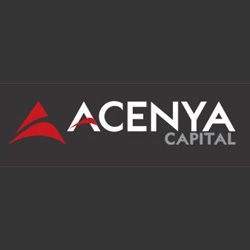Financial distress investigation using Piotroski factor analysis
Joseph Piotroski published a landmark academic paper in 2000 showing that nine accounting variables can be used to give an edge in investing in value shares because they allow a sifting out of those shares with high probability of trouble, and those which, while also having low share prices relative to the value criteria, do not show much indication of difficulty.
(Earlier Newsletters outlining Piotroski’s work: 5th Feb 2015, 9th Feb 2015)
Profitability factors
If the firm is profitable and produces positive cash flow it has a capacity to generate funds internally. Furthermore, a positive earnings trend suggests an improvement in the firm’s ability to generate positive future cash flows.
- Net income before extraordinary/exceptional items? Highcroft produced a profit of £3.5m on the underlying business of renting out property. However, the general decline of commercial property values in 2020 led to a valuation loss on its portfolio of £4.7m. This valuation loss would only affect Highcroft’s ability to source debt capital and therefore suffer financial distress if it was operating on a high loan to value ratio. But drawn debt of £27.2m is only 34% of its property value of £78.8m, so it is far from troubling its lenders. And it has £3.3m in cash and is currently marketing for sale a property worth £3.25m. Given all of this I’ll award it a Piotroski point on the grounds that on a day-to-day basis it is profitable.
- Cash flow from operations? Yes, Highcroft produced cash flow from operations of £4.4m. Another point is gained.
- A positive change in return on assets employed in the business from the previous year? ROA is measured by net income before exceptional items divided by beginning of year total assets. There was a decline in ROA:
In 2019 the figure was £4.1m/£84.0m = 4.9%, whereas in 2020 it was £3.5m/£89.4m = 3.9%. No Piotroski point because the trend is in the wrong direction and this may lead to less financial stability (but, given the high cash flows, I’m not too worried on that score).
4. Cash flow is greater than profit (so profits are not driven primarily by positive accruals, which may be ‘managed’). This is the case for Highcroft so another point is scored.
Leverage, liquidity, and source of funds
Measuring changes in capital structure (debt:equity ratio) and the firm’s ability to meet future debt service obligations
5. Change in leverage over one year. Has the firm’s long-term debt reduced relative to its average total assets?
In 2019 the figure is £22.2m/£88.2m = 25%. In 2020: £27.2m/£88.2m = 31%.
The gearing level has worsened so no Piotroski point. Note however that in both years the debt relative to asset ratio was low for a property company.
6. Has the firm’s current ratio (current assets divided by current liabilities) improved over the past year?
The ratio in 2019 was £2.7m/£6.5m = 0.4……….To read more subscribe to my premium newsletter Deep Value Shares – click here http://newsletters.advfn.com/deepvalueshares/subscribe-1


 Hot Features
Hot Features












